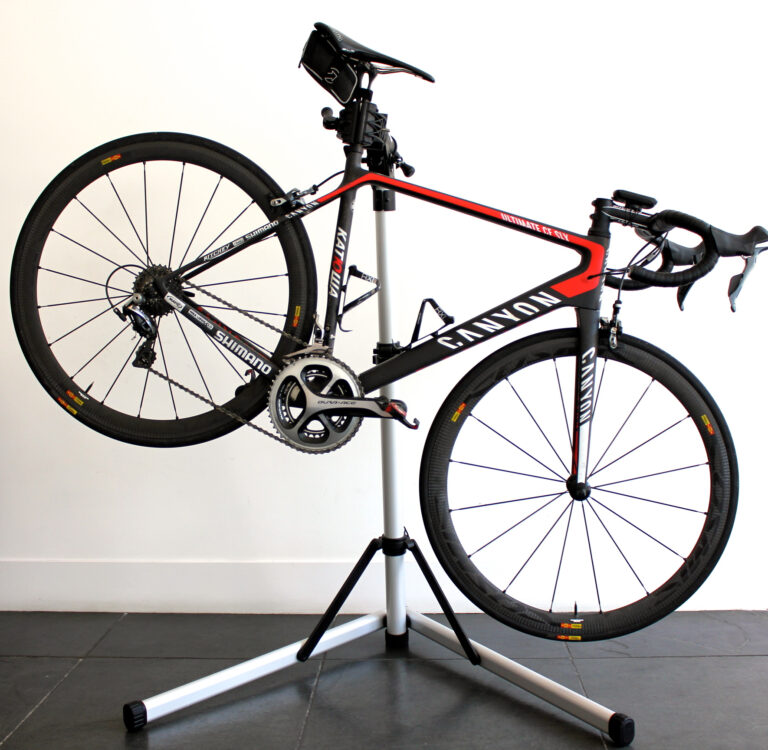The Lapierre Sensium 300 is a good example of entry-level carbon fibre thanks to an excellent frame which looks like something you’d expect to see further up the food chain.
The Sensium is part of Lapierre’s ‘performance’ range – read, sportive range, thanks to a reasonably relaxed geometry and competitive pricing.
There are five bikes in the collection, starting with the Sensium 100 at £1,199.99 and rising to the Sensium 500 at £3,199.99, with the Sensium the mid-range option at £1,649.99.
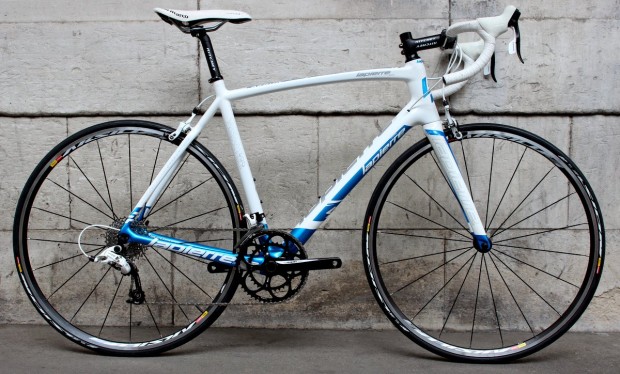
The chassis
Two frames are used within the Sensium range, with the 100-300 models using a chassis that was developed with Koga, while the 400 and 500 models use Lapierre’s own design that features a polymer insert in the seatstays, which Lapierre say results in increased vibration absorption.
The Sensium 300’s frame is home to many of the features we’ve come to expect from more expensive models. There’s an asymmetric headtube which tapers from 1-1/8″ to 1-1/4″, a full-carbon PressFit bottom bracket and very neat cable routing. The rear mech routing is particularly neat, with the cable emerging from just above the dropout before quickly swooping round to enter the derailleur. The frame is also Di2 compatible, which is rare at this price point.
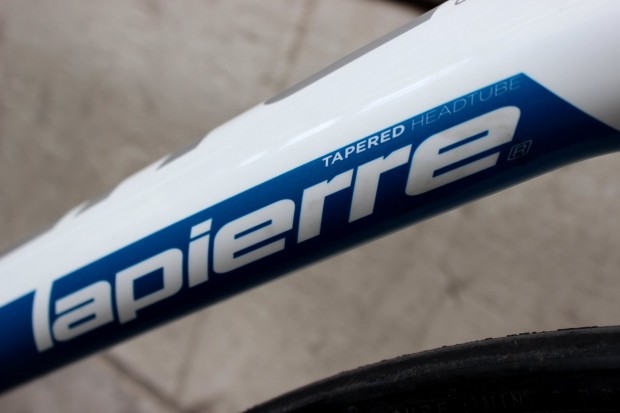
The white paintjob – and the white SRAM Apex groupset, which we’ll run through later – means the frame attracts dirt and grime fairly easily, and it’s difficult to get it back to the spotless state in which it left the factory. We’d also like to see the Lapierre logo and the frame’s associated marketing blurb spread less liberally over the frame.
The Sensium 300 is designed with comfort high on the design agenda but the geometry strikes a sensible balance of racy and upright. Our large model has a 55cm seattube, 56.5cm toptube, 73 and 72.5 head and seattube angles, and a 180mm headtube, which is tall but by no means huge.
By way of comparison, two of the dominant bikes in the sector – the Specialized Roubaix and Trek Domane – have headtubes which measure 190mm and 175mm for the equivalent size frame, so the Sensium sits at the lower end of the spectrum. Also, as we pointed out in our first look, the equivalent size in Lapierre’s Xelius ‘race’ frame, by way of comparison, adds just 5mm to the toptube and loses 10mm from the headtube.
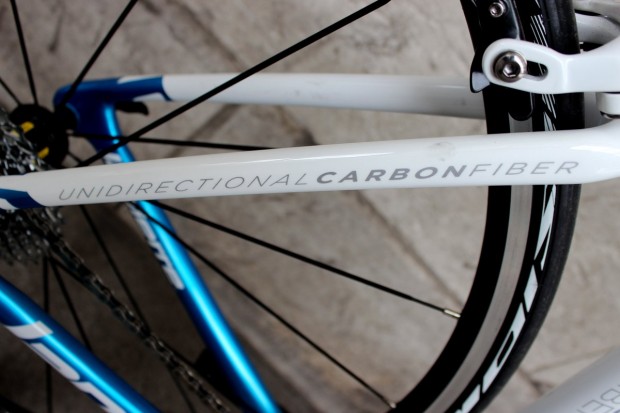
The ride
As a result, the Sensium 300’s riding position has a little more comfort built into it for riders who don’t want the aggressive low and long position of a race bike, but is low enough to ensure you don’t feel like you are poking your head above the parapet when riding. It’s still a little high for my personal taste but represents a well-thought out balance for most riders looking for a bike in this market.
While some sportive bikes can feel languid, the Sensium’s handling is direct, certainly more comparable with a race machine than a sit-up-and-beg bike.
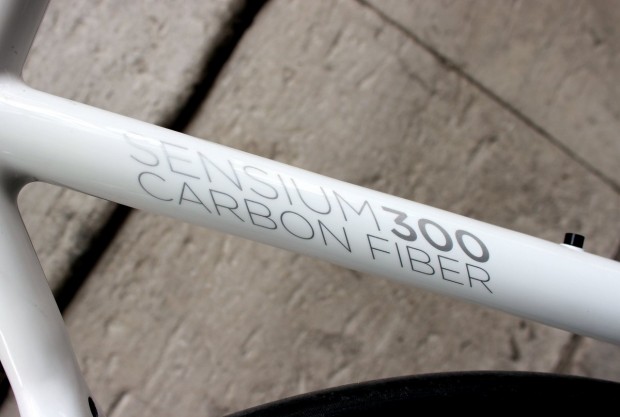
As noted above, the frame doesn’t have the polymer insert found in the seatstays of the 400 and 500 models, added to build in a little more comfort, but the 300 does a good job at smoothing out road buzz. It’s not a plush ride like, say, the Trek Domane 2.3, which uses the innovative IsoSpeed decoupler to effectively build suspension into the seattube, and the Sensium 300 still feels connected to the road but that’s no bad thing.
The PressFit 30 bottom bracket and stout chainstays ensure that power transfer is good, though weight (8.2kg on the RCUK scales, a little above Lapierre’s claimed 7.9kg).is always going to be a limiting factory when climbing. Slot in a lighter, zippier set of wheels than the stock Mavic Aksium hoops (claimed weight 1,735g) supplied with the frame and that reduction in rolling weight is keenly felt.
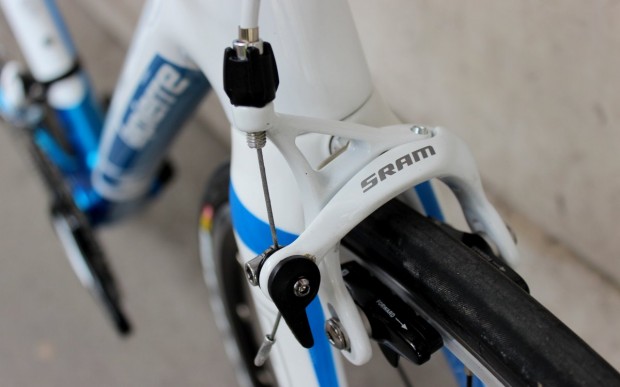
The build
That brings us on to the build and the frame is the basis of a decent package which, for your £1,649.99, comes with a complete SRAM Apex groupset, those Mavic Aksium wheels, shod with the French brand’s Aksion tyres, plus aluminium Ritchey finishing kit and a Selle San Marco Ponza Power saddle.
Apex is bottom of the SRAM food chain but it offers reliable shifting, still using the American firm’s DoubleTap lever. Apex was the first groupset to use SRAM’s WiFli – that’s Wider, Faster, Lighter – rear derailleur, which allows for a cassette with a sprocket as big as 32t.
That’s huge, and combined with the compact 50-34t chainset provides a very wide spread of gears which will allow you to winch your way up almost any climb. What it does mean, however, is that there are some fairly big gaps between gears and I sometimes found it difficult to find a gear I was happy with while riding on the flat.
WiFli, while we’re on the subject, is a rare example of trickle-up technology, whereby it started on a lower priced product, and made its way onto a more expensive sibling, in this case SRAM’s Red and Force groupsets.

Lapierre have chosen to equip the Sensium 300 with the white version of SRAM Apex and that means white brakes, white derailleurs, white shifters paddles and white hoods, paired with, you guessed it, a white saddle and white handlebar tape. Whether that suits you or not is down to personal taste.
Otherwise, the Ritchey handlebar and stem do all you ask from them and while we’d expect an aluminium seatpost to transmit a little road buzz, particularly when we almost exclusively use carbon posts, we didn’t experience any significant problems in terms of comfort.
The Mavic Aksium wheels, as we alluded to earlier, are well-built and dependable hoops, if a little weighty, and are best saved for training duties. As if often the case, the biggest performance gains are to made made from upgrading to a lighter wheelset.
Conclusion
Because the frame is worth it. It’s an excellent chassis for the money, and a good example of a topic we brushed over in reverse earlier – the trickle-down effect – whereby you have an entry-level carbon frame which bears many of the hallmarks of something more expensive and, most importantly., the ride quality is impressive, too.
Price: £1,649.99
Sizes: XS-XL
Website: Lapierre
UK distributor: Hotlines


